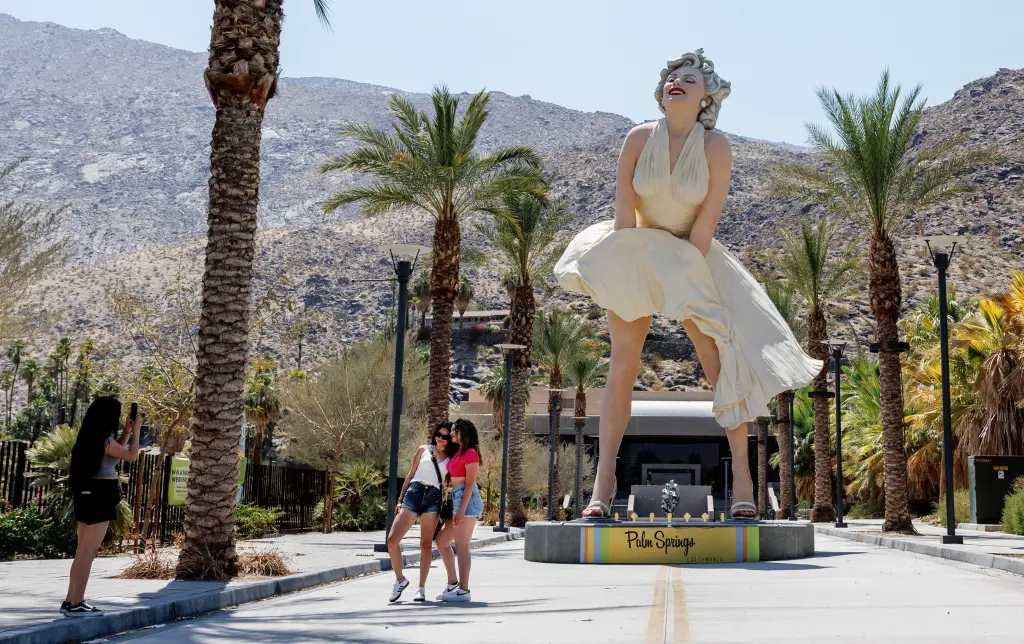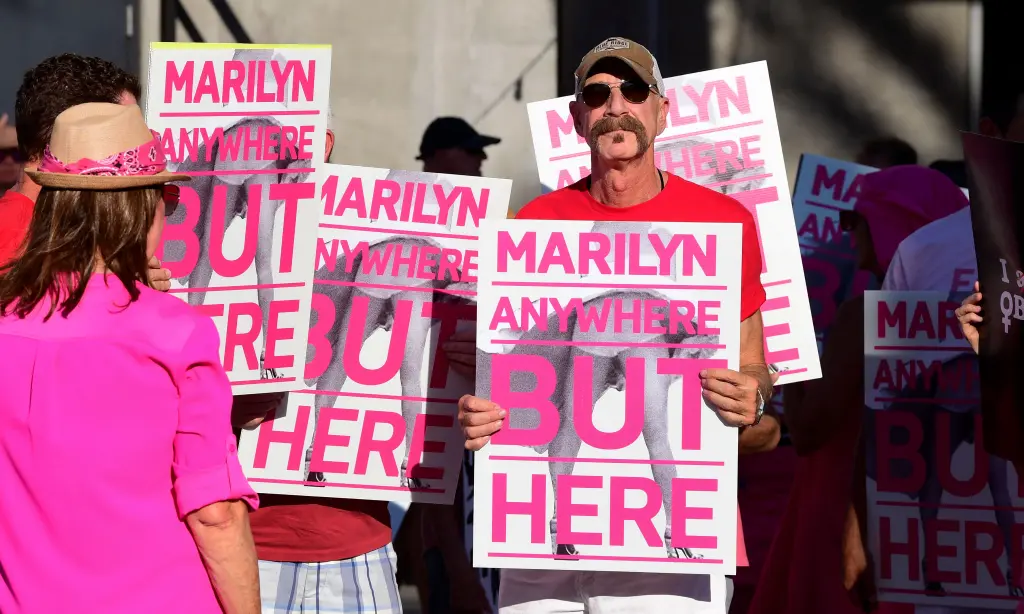In a recent move reflecting the growing awareness of public sensibilities, the city of Palm Springs is preparing to shift its renowned Marilyn Monroe statue to a less conspicuous spot. This action follows strong criticism from local voices. Standing tall for three years downtown, the statue captures the memorable moment from the 1955 hit “The Seven Year Itch,” where Monroe’s iconic white dress flutters above a subway grate.

The massive 26-foot sculpture, christened “Forever Marilyn” by artist Seward Johnson, was initially placed as a magnet for tourists, located strategically beside a downtown park. Despite its popularity, some have criticized the statue’s presence, labeling it “sexist” and unsuitable for young audiences.

The controversy took center stage as people voiced concerns regarding the statue’s overtly suggestive portrayal of Monroe and her visible undergarments. Many parents and activists see it as objectionable, arguing that it reduces Monroe to mere sexual symbolism, thus conveying an undesirable message to impressionable young minds.
Palm Springs Mayor Jeffrey Bernstein expressed satisfaction, stating, “The City Council is very pleased to have found a satisfactory solution to this issue, which has divided so many within our community.” While the new park location remains undisclosed, it’s evident that the statue’s celebrated status is set to be notably lessened.

The statue was first installed in 2014, faced similar criticisms, and was therefore removed, making a reappearance in 2021 and stirring another wave of disapproval. Notable critics include Louis Grachos, former executive director of the Palm Springs Art Museum, who contended that the statue’s positioning, revealing Monroe’s posterior and underwear to the public eye, exemplified misogynistic attitudes. He, along with others, voiced their concern that it perpetuates a belittling depiction of women and misrepresents Monroe’s enduring legacy following her death in 1962.
Adding to the criticism, Elizabeth Armstrong, another former museum director, lambasted the statue as “a monument to misogyny,” hinting that it supported harmful perspectives towards women and encouraged inappropriate voyeurism.

The local outcry against the statue was both vocal and visible. Protestors took to the streets with placards denouncing the statue for its dated and sexist undertones. A petition on Change.org surfaced, advocating for the statue’s removal or its relocation to a less central area, such as near Cabazon’s “concrete dinosaurs,” thus repurposing it as an odd roadside attraction rather than a central spectacle.

Nevertheless, the statue retains some advocates. Scott White, president and CEO of Visit Greater Palm Springs, championed the statue’s contribution to tourism. “It was immediately embraced by visitors,” White commented, highlighting its role in drawing visitors and sparking interest. P.S. Resorts, a group dedicated to boosting local tourism, purchased the statue for $1 million in 2021.
This relocation act gestures towards appeasing critics but remains a contentious decision, spotlighting larger discourses around art, public spaces, and shared values. It epitomizes the delicate balance between preserving cultural expressions and respecting community standards in today’s politically dynamic climate.



